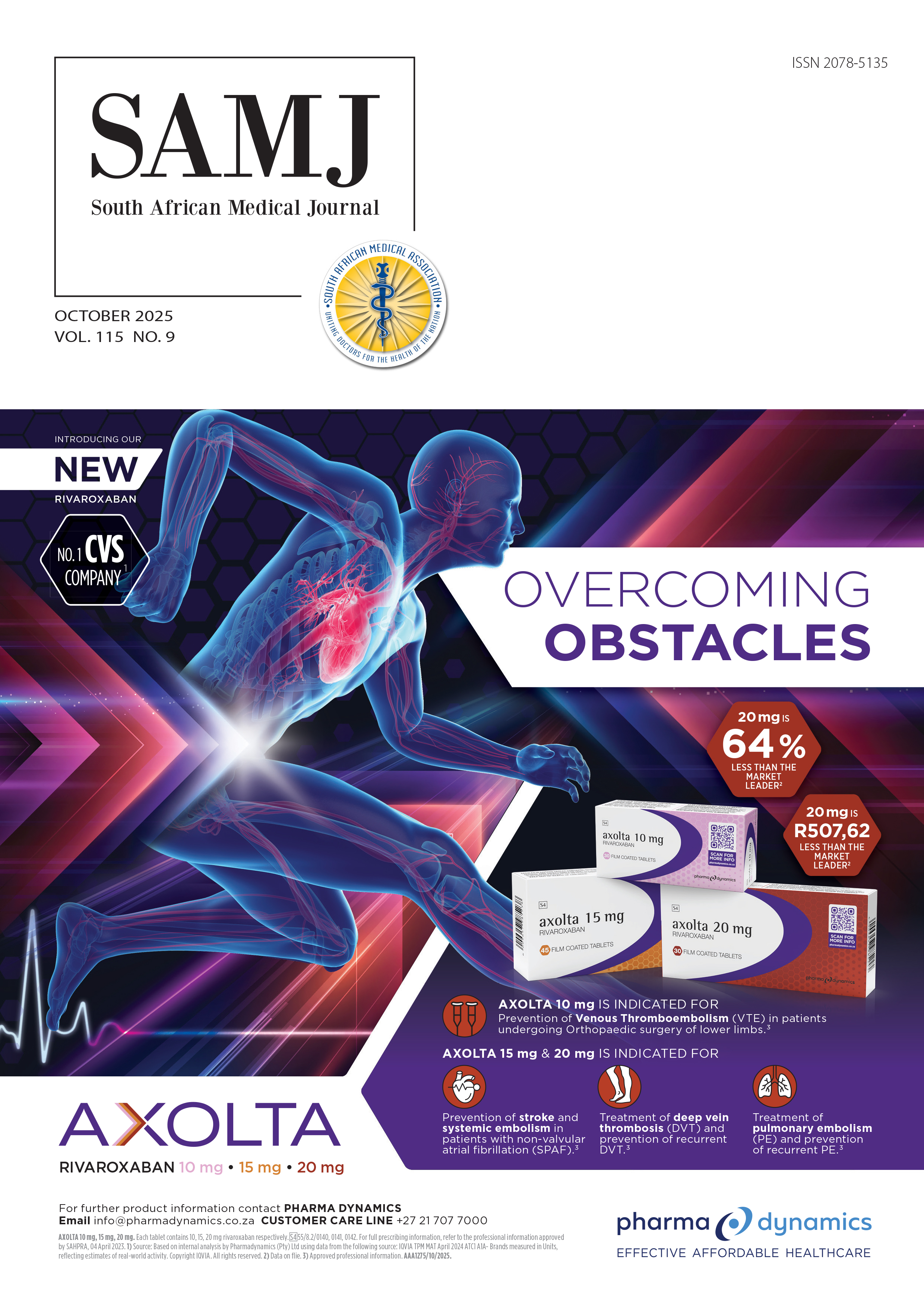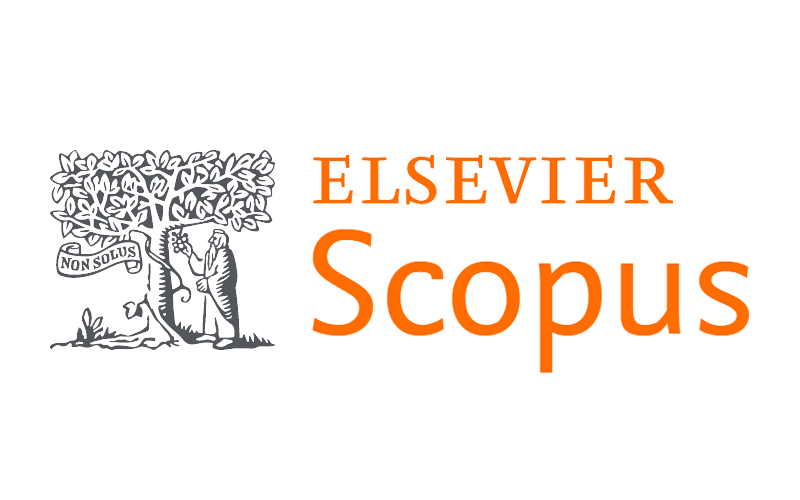Wound documentation by doctors in academic emergency departments, Gauteng Province, South Africa
DOI:
https://doi.org/10.7196/SAMJ.2025.v115i9.3049Keywords:
Wound documentation, J88, medico-legal, Acute wound documentation, note keepingAbstract
Background. Medical doctors manage trauma cases daily, most needing medicolegal documentation. Wound documentation is a vital skill required by doctors.
Objectives. To describe and compare the knowledge and practices of documentation of clinical findings on the J88 form, looking at the accuracy of wound features and wound size estimation, focusing on participant gender, medical level of experience and type of injury simulated.
Methods. This was a multi-centre, prospective, observational, cross-sectional study of three academic emergency departments in the University of the Witwatersrand academic circuit using questionnaires, moulage and wound characteristic rubrics.
Results. Eighty-three doctors participated in the study. This was equally spread between sexes. According to wound rubrics, participants scored an average of 48% for accuracy of J88 form completion. The most precise wound description was abrasion (62.5%). The least precise wound description was stab wound (33.3%). Most participants (63.8%) noted on the questionnaire that they always indicate bruises; however, 25.3% missed the simulated bruise. The most frequently documented wound features were location and size estimation (98.8%). The least documented wound feature was the age and mechanism of the injury (<6%). Large wounds (>5 cm length) were underestimated (p<0.001), with accurate size estimations of smaller wounds (<5 cm). Perceptions of undergraduate training in wound documentation were evenly divided between acceptable and poor, while postgraduate training was generally regarded as poor.
Conclusion. This study found that wound documentation among emergency department doctors was poor, with participants scoring an average of 48% across the marking rubric. More training at both undergraduate and postgraduate levels is recommended.
References
1. Tefera A, Lutge EE, Moodley N, et al. Tracking the trauma epidemic in KwaZulu-Natal, South Africa. World J Surg 2023;47(8):1940-1945. https://doi.org/10.1007/s00268-023-07032-2
2. Mitra A, Okafor UB, Kaswa R, Adeniyi OV. Epidemiology of interpersonal violence at a regional hospital emergency unit in Eastern Cape, South Africa. S Afr Fam Pract 2022;64(1)e1-e5. https://doi. org/10.4102/safp.v64i1.5511
3. Hardcastle T, Oosthuizen G, Clarke D, Lutge E. Trauma, a preventable burden of disease in South Africa: Review of the evidence, with a focus on KwaZulu-Natal. In: Padarath A, King J, Mackie E, Casciola J, eds. South African Health Review. Durban: Health Systems Trust, 2016;179-189.
4. Bhana M, Fru P, Plani F. A long walk to freedom: The epidemiology of penetrating trauma in South Africa – analysis of 4 697 patients over a six-year period at Chris Hani Baragwanath Academic Hospital. South Afr J Surg 2022;60(2):77-83. https://doi.org/10.17159/2078-5151/sajs3582
5. Loots DP, Saayman G. Medicolegal perspectives of interpersonal violence: A review of first-contact clinical notes. S Afr Med J 2019;109(10):792-800. https://doi.org/10.7196/samj.2019.v109i10.13951
6. Müller K, Saayman G. Clinical forensic medicine: Completing the Form J88 – what to do and what not
to do. S Afr Fam Pract 2003;45(8):39-43. https://doi.org/10.4102/safp.v45i8.1886
7. Fouché L, Bezuidenhout J, Liebenberg C, Adefuye AO. Practice of community-service doctors in the assessment and medico-legal documentation of common physical assault cases. S Afr Fam Pract
2017;60(1):21-25. https://doi.org/10.1080/20786190.2017.1364014
8. Kotzé JM, Brits H, Botes BA. Part 1: Medico-legal documentation South African Police Service forms,
Department of Justice forms and patient information. S Afr Fam Pract 2014;56(5):16-22.
9. Kotzé JM, Brits H, Monatisa MS, Botes J. Part 2: Medico-legal documentation. Practical completion of
pages 1 and 4 of the J88 form. S Afr Fam Pract 2014;56(6):32-37.
10. Mogale R, Kushner KE, Richter MS. ‘If it is a tear let it be a tear, not a laceration’: Form J88 as evidence
in prosecution of violence against women in South Africa. Afr Safety Promotion J 2015;13(2):17-30. 11. Peterson N, Stevenson H, Sahni V. Size matters: How accurate is clinical estimation of traumatic wound
size? Injury 2014;45(1):232-236. https://doi.org/10.1016/j.injury.2012.04.018
12. Twaij A, Carballido FC, Maryosh J, Pucher PH. Results of a simple intervention to improve documentation quality in major trauma. Int J Surg 2013;11(8):710. https://doi.org/10.1016/j.
ijsu.2013.06.658
Downloads
Published
Issue
Section
License
Copyright (c) 2025 R Kleynhans, J du Plessis, P Moodley

This work is licensed under a Creative Commons Attribution-NonCommercial 4.0 International License.
Licensing Information
The SAMJ is published under an Attribution-Non Commercial International Creative Commons Attribution (CC-BY-NC 4.0) License. Under this license, authors agree to make articles available to users, without permission or fees, for any lawful, non-commercial purpose. Users may read, copy, or re-use published content as long as the author and original place of publication are properly cited.
Exceptions to this license model is allowed for UKRI and research funded by organisations requiring that research be published open-access without embargo, under a CC-BY licence. As per the journals archiving policy, authors are permitted to self-archive the author-accepted manuscript (AAM) in a repository.
Publishing Rights
Authors grant the Publisher the exclusive right to publish, display, reproduce and/or distribute the Work in print and electronic format and in any medium known or hereafter developed, including for commercial use. The Author also agrees that the Publisher may retain in print or electronic format more than one copy of the Work for the purpose of preservation, security and back-up.





